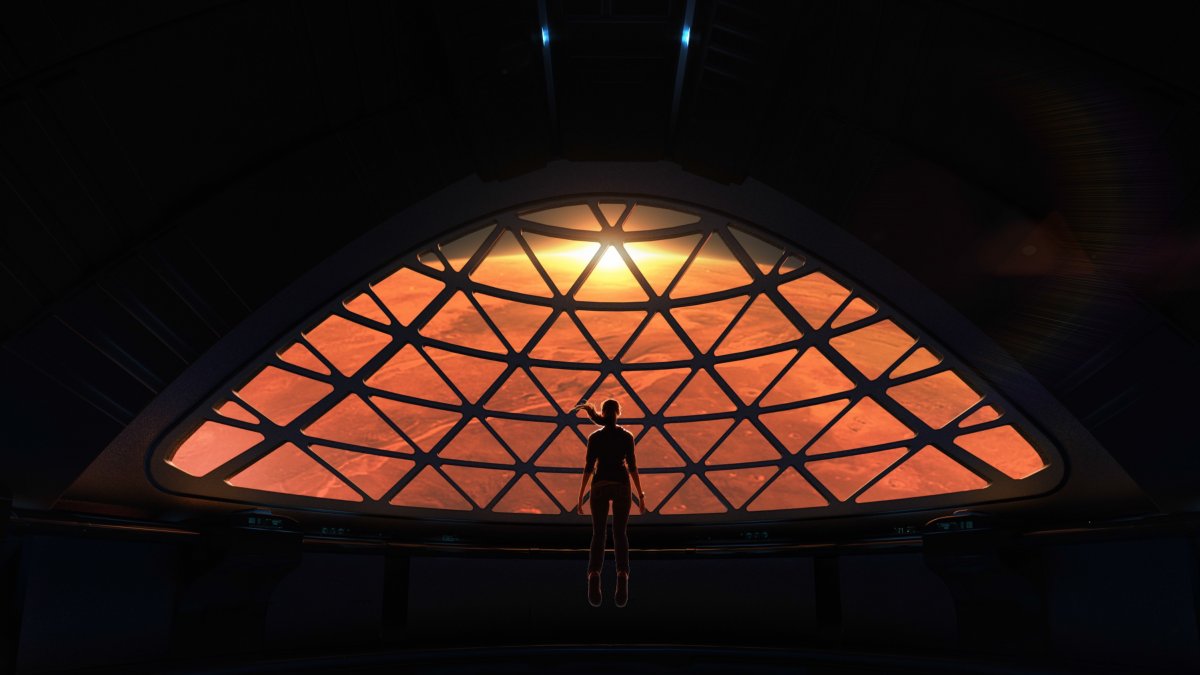Save the International Space Station and give it to the private sector
President Trump, early in his Administration, has an opportunity to take a “giant leap for mankind” with a simple executive action –- save the International Space Station (“ISS”).
Every generation or so, a US President has this chance of moving humankind further off-planet and into space. Kennedy challenged NASA and American industry to successfully conduct a Moon Landing in the 60’s; Reagan transferred the role of commercial space transportation from NASA to the private sector in the 80’s.
Today, President Trump, by saving the ISS from de-orbiting in 2024, sets the stage for humankind’s movement out of earth orbit, to our nearest neighbor –- the Moon. This single act of vision and international leadership would provide a significant stimulus to a new generation of scientists, engineers, and entrepreneurs, with measurable, direct, and indirect economic benefits to the US economy.
America — and the world — is engaged in a conversation about the future possibilities of living “Off-Planet” – whether it be the Moon, Mars or beyond. And a “New Space Generation” of visionaries and commercial risk takers are considering the practical, social and economic challenges to work, produce, and live off-planet. This generation is young, multi-national, creative, opportunistic, technically skilled, and realistic about the challenges and risks that lay ahead in pursuing opportunities “out there”, beyond Earth’s orbit.
The tools for their success for off-planet ventures, development, and settlement are already close at hand — reusable rockets for transportation & supply; lasers for deep space communications; new forms of habitation as staging for longer term settlement; advanced robotics for tasks deemed unsafe or too costly for humans to perform.
Private capital, sensing new market opportunities, appears eager to pursue space-based business models to support human expansion, such as deep space transportation, Off-Planet habitation, manufacturing, and production of food and minerals on the Moon, and possibly asteroids. What these risk takers need is a stable platform from which to stage their initial efforts. The ISS could be that platform, but no longer in Earth orbit.
Instead, the ISS could be re-purposed and re-deployed from its current low earth orbit, to an orbit around the Moon. This one step would provide a significant critical, stable infrastructure for human expansion onto the lunar surface.
Divesting the ownership of the ISS in favor of the private sector just makes good economic and public policy sense. Why throw the ISS away, when it could be offered to the international private sector for use as a lunar-staging infrastructure?
New space pioneers will need a safe harbor which would provide the stability of safety and security, particularly in times of trouble. The ISS could be such a safe harbor, orbiting around the Moon, and readily accessible from the lunar surface – providing security, stability, and a transition point between the Earth and the Moon for bi-directional commerce, communications, and safety.
We know the ISS requires periodic “nudging” by visiting re-supply ships, such as SpaceX, Soyuz, and Antares – previously the Space Shuttle – to re-position it into its preferred low Earth orbit. As these supply ships often conduct this maneuver whilst docked with the ISS, the nudge does not appear to be a significantly risky maneuver.
So what does it take to turn a “nudge” into a trans-space journey to a lunar orbit? And, what does it take for the US Government, in cooperation with our international space partners, to transfer the ownership of the ISS to private sector ownership? We will only get these answers if the President challenges all of us to find them in the context of the highest and best use of the ISS.

Photo courtesy of Flickr/NASA Goddard Space Flight Center
An undeniable fact of the benefits derived from this New Space business sector and its emerging venture firms is that literally everything necessary for humankind to transit space and survive Off-Plane must be developed here – on Earth. And it will be the economy of Earth and its populations that will benefit in the nearest term from the success and failure of humankind’s migration Off-Planet. For example:
- Transportation The funding to move the ISS will stimulate a new form of space transportation – the space barge. It has taken over 50 years for industry to develop a reliable, reusable commercial space transportation system – and it only goes to/from low earth orbit, a mere 240 miles above the Earth’s surface.The challenge and the reward for international space transportation firms is to initially design and operate a version of a space tug, which can nudge the ISS out of Earth orbit, across over 200,000 miles of deep space, and position it into a lunar orbit. But once accomplished, the space tugs will become “space freighters”, the galactic version of a trans-space trucking system connecting the Earth and the Moon, making the movement of goods and people between them a regular, reliable service.

Photo courtesy of Flickr/NASA Goddard Space Flight Center
- Habitation In the near term, humankind needs to bring its life-sustaining environment with it into space. Safe and reliable habitations must be deployed and tested – to sustain life in space and on the Moon. Advances in composite materials, atmospheric cleansing, waste management, and quality of life engineering must be developed on Earth and tested in deep space to ensure the safety and comfort of those seeking to live and work off-planet. And as these efforts advance humankinds sustainability off-planet, the developing companies on earth will find applications to improve the quality of life for humankind here on Earth.

- Communications Command and control of deep space systems must be developed to deal with transmission latencies, and throughput demand. Lags in transmissions results in a delay in commands, particularly vital to automated, robotic systems. And, humankind needs to remain connected to its culture, family, and enterprise partners on Earth whilst living Off-Planet. Humankind’s bandwidth demands will geometrically increase, as human activity arithmetically increases Off-Planet. Thus, new forms of communication technologies, such as lasers, need to be developed, and as a result leading edge international communication companies will also apply them to their Earth-bound networks and customers.

Photo courtesy of Flickr/NASA Goddard Space Flight Center
- Production.
Food. It is most reasonable to think that the first inhabitants of any Off-Planet colony will be robots, not humankind. In order to survive, humankind must become self-sustaining in its food production, and not dependent on the arrival of the “next supply ship”. There is a fine balance between working to grow food, and consuming the food you grow. Get the balance wrong, and you die. But robots could “learn” to grow humankind’s food before it establishes a permanent colony Off-Planet. Old methods of food production may give way to new techniques more successful in the unique lunar soil. New stimulants, soil conditioners, and genetically altered could be tested off-planet, with applications back here on Earth in areas with challenging environmental conditions.
Minerals. The goal of humankind is not to just live “off-planet” but to succeed – socially, institutionally, and financially. Previous analysis of the Moon’s mineral potential has been limited to the surface. What the Moon holds below the surface requires significant exploration. This is another area where robots can lead the way for humankind, and as such robotic systems are developed for off-planet labor, their diverse applications to tasks here on Earth grow.

Photo courtesy of Flickr/Bob Owen
All of these items, and many more, would accelerate the new space industrial base on this planet – technical, capital, economic, and social – and create an expanding, dynamic new space infrastructure “off-planet”.
Government’s role in new space development, albeit limited, will continue by providing stability and certainty in the areas in which it is best suited, such as legal regimes ensuring private property ownership rights – where human’s settle, what they produce and develop, where they can sell or trade their products. Earth’s legal regimes are nationally-driven, but Off-Planet legal regimes should be more ubiquitous, without regard to national jurisdictions. It is within the purview of governments and their international institutions to develop and codify these rules. So as humankind moves Off-Planet, there are new opportunities for lawyers, accountants, and public policy experts.
Presidential action is needed immediately, however, to ensure the ISS can be re-purposed for this mission. NASA is considering a “de-orbit” plan for the ISS, meaning “destruction”, possibly as early as 2024, resulting in a loss to US taxpayer’ investment of over $34 Billion. Destroying the ISS makes no sense.
NASA and its international partners are rumored to be developing a replacement (albeit not yet OMB approved) government financed, and managed international lunar space station – maybe excluding the Russians. If true, this creates a unique opportunity. Since the ISS is not really owned by any one country, but managed under an international partner’s agreement, the ISS’ transfer to an acceptable private sector entity could be a nice trade for NASA’ invitation to its international partners to join in the new lunar station. That would relieve NASA of its $1B in annual budgetary support for the ISS, and coincidentally, option the ISS for private use.
America’s westward expansion in the 19th Century was stimulated by government, but led by companies and peoples seeking their futures and fortunes “out there” – beyond the established order, or physical boundaries.
The Great Expansion of Humankind in the 21st Century, off this planet is today the topic at every space conference and policy discussion, amongst billionaires and high school students. Like Kennedy and Reagan, President Trump can provide a huge stimulus to an eager private sector with this simple, audacious, cost-effective act.
In his 1stterm, President Trump can give the private sector a platform from which to commence humankind’s expansion beyond this planet by an initial first step – save the ISS.
Featured Image: NASA Goddard Space Flight Center/Flickr UNDER A CC BY 2.0 LICENSE
Published at Sun, 17 Sep 2017 10:30:57 +0000





